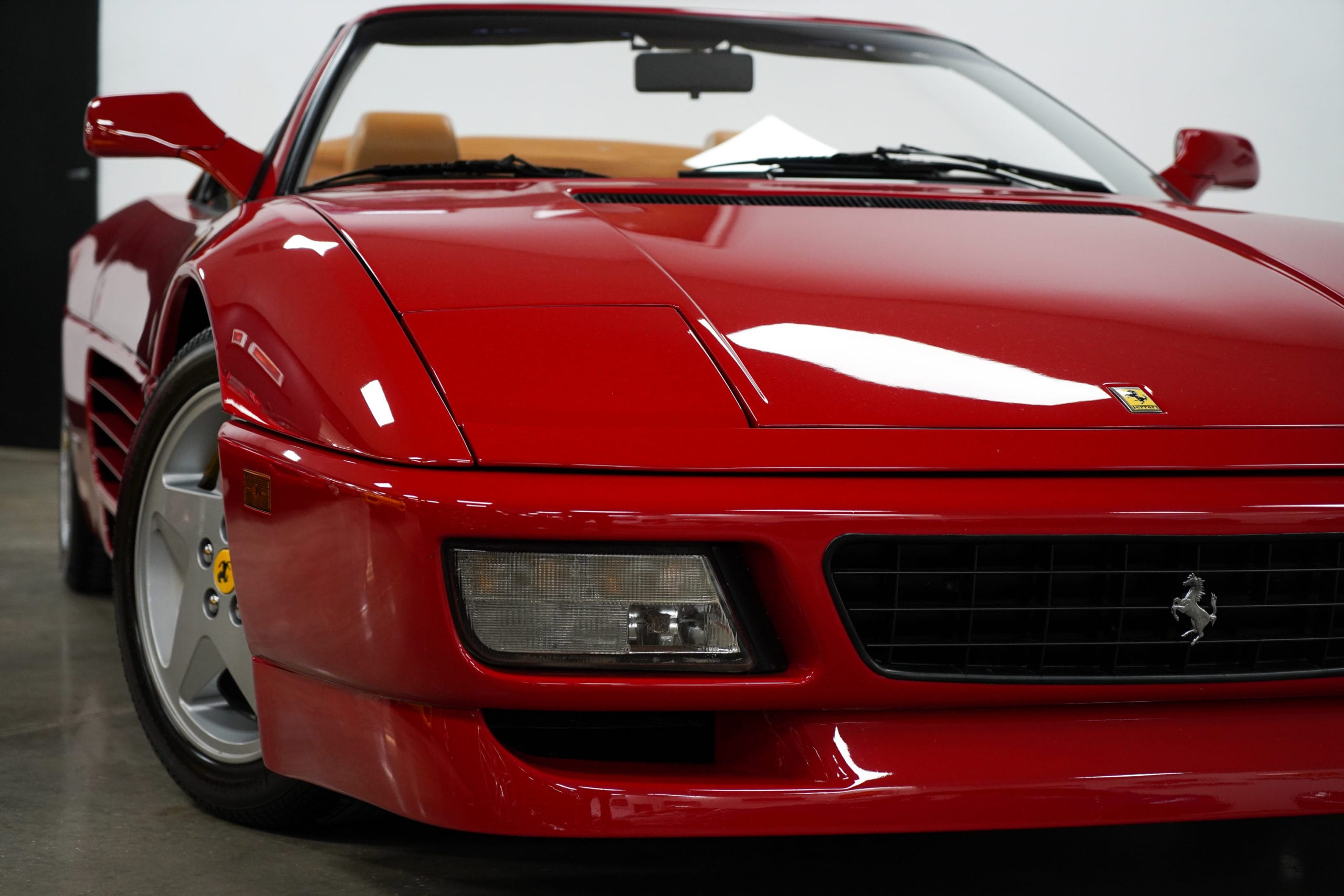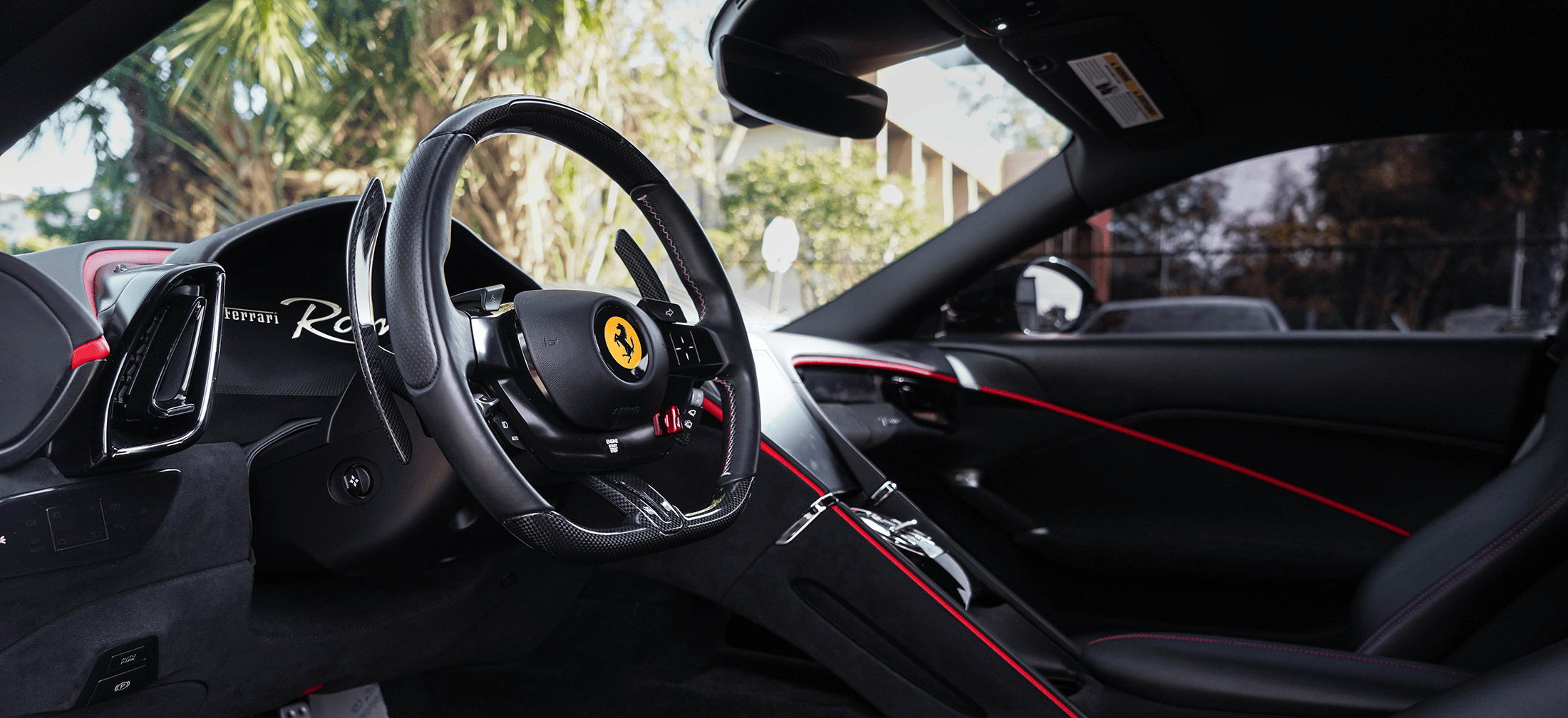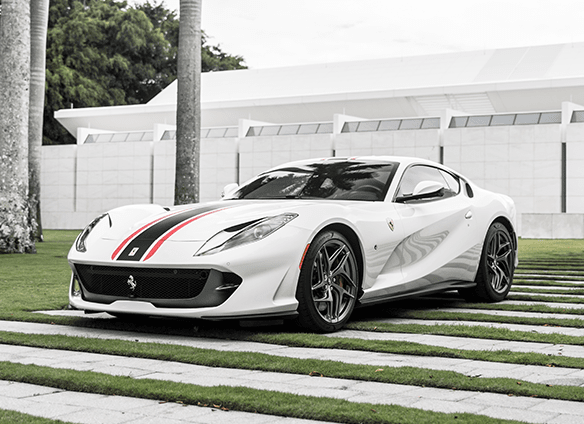Ferrari Depreciation: How Does It Affect Resale Value?
For exotic car owners, resale value is always top of mind. For Ferrari owners, depreciation can be a little different than other luxury cars. While Ferraris on the whole tend to retain their value better than most luxury vehicles, different models experience dramatically different rates of depreciation. Depending on the model, its maintenance, and the market, your car’s depreciation can vary greatly.
Read on to learn everything you need to know about Ferrari depreciation, including the factors at play, how it works, and tactics to maintain your Ferrari’s value.
What Factors Drive Ferrari Depreciation?
When it comes to Ferrari depreciation, there are a range of different factors at play. Model rarity, production numbers, maintenance costs, and broader economic conditions all affect a Ferrari’s resale value over time.
Impact of Model Rarity and Production Numbers
As with any exotic car, rarity plays a significant role in the value of a Ferrari. It all goes back to supply and demand; when demand outweighs supply, buyers are willing to pay big bucks for the car they want.
Their limited production has slowed the depreciation of some Ferrari models and helped them retain high values, like the 488 GTB, today worth an average of $241,650. In some cases, the rarity of limited edition or classic models can even cause a Ferrari to appreciate in value. Only 36 1963 Ferrari 250 GTOs were ever produced, contributing to their astronomic price tags of $52 million. This stands in stark contrast to Ferraris with high production numbers, like the Ferrari 456 GT, which typically sells for around $80,400.
Influence of Maintenance and Ownership Costs
Maintenance also plays a big role in your Ferrari’s depreciation. To retain as much value as possible, it’s imperative to perform regular maintenance and carefully upkeep your car. It’s also a good idea to keep mileage low. The more miles on your car, the more assumed wear-and-tear.
Detailed service records are also a must when it comes to your Ferrari’s value. Buyers want to see proof of regular maintenance; a spotty service history can lower the value of your car.
Role of Economic Conditions and Market Trends
Of course, broader economic factors have a big impact on Ferrari depreciation, too. As market trends and consumer sentiment shift, so does your Ferrari’s resale value. Fortunately, Ferrari’s production-to-order approach offers some market stability as compared to other mass produced luxury cars.
Detailed Analysis of Ferrari Depreciation Process
 In order to get a better grasp on Ferrari depreciation, let’s break down the process into short-term drops and long-term trends.
In order to get a better grasp on Ferrari depreciation, let’s break down the process into short-term drops and long-term trends.
Evaluating Depreciation Rates and Collector Appeal
Ferrari depreciation can vary greatly from model to model. While Ferrari models typically depreciate between 20% and 30% in the first year, not all do. The Ferrari Roma only depreciated around 1.5% over its first three years.
In the long term, factors like collector appeal can have a significant influence on depreciation trends. For most Ferrari models, depreciation slows to 10 to 15% over subsequent years and ultimately levels off.
But some models experience much slower depreciation. The Roma depreciated just 21.3% over five years. Some models even undergo appreciation in the long run, leaving them with values far higher than their original sale price.
Assessing Maintenance Costs and Vehicle History
Vehicle history, low mileage, and proper maintenance can all help maintain a Ferrari’s value over time. Studies show that Ferrari 488 GTBs with 12,000+ miles sold for approximately 25% less than those with under 3,000 miles. Cars with well-documented service records and lower upkeep issues typically have more stable depreciation curves, too.
Considering Global Economic Influences on Investment Value
Some factors influencing Ferrari depreciation are completely beyond owner control. Global economic trends, like shifts in the luxury car market and changes in consumer buying habits, can seriously impact a Ferrari’s value.
Broader economic factors can either accelerate or stabilize depreciation. While economic upticks generally slow depreciation, economic downturns don’t always speed it up. Their effects can vary dramatically based on both car models and market conditions. The pandemic caused an unexpected spike in demand for luxury cars, causing Ferraris and other luxury cars to appreciate in value.
Strategies to Preserve Ferrari Resale Value
 Fortunately, there are steps you can take to maintain your Ferrari’s value over time. Follow these tips for your best possible return:
Fortunately, there are steps you can take to maintain your Ferrari’s value over time. Follow these tips for your best possible return:
- Perform regular maintenance: Get regular Ferrari maintenance at a certified mechanic, including oil and fluid changes, brake pad and tire replacements, and other necessary upkeep tasks.
- Protect its cosmetic condition: Take measures to preserve your car’s cosmetic condition, like paint protection film and ceramic coatings to protect the paint and temperature-controlled storage.
- Keep mileage low: Buyers assume that more mileage means more wear-and-tear on your Ferrari, so it’s best to keep mileage low to preserve your Ferrari’s value.
- Keep detailed records: Maintain records of all work done to your car, whether repairs, upgrades, or simple maintenance tasks, to show prospective buyers.
Common Pitfalls in Assessing Ferrari Depreciation
While Ferrari’s tend to hold their value better than many other luxury vehicles, there are common pitfalls that can lead to undervaluation or unexpected Ferrari depreciation. Read on to learn more.
Overlooking Hidden Ownership and Maintenance Costs
That Ferrari’s are expensive is common knowledge, but less commonly known is the costs of owning a Ferrari. In addition to the sticker price, Ferrari owners need to budget for expensive maintenance, parts, and service fees.
These often-overlooked costs of Ferrari ownership can add up quickly. Some Ferrari owners find themselves unable to afford their car’s regular maintenance requirements and necessary tasks go by the wayside, causing their cars to depreciate more quickly than expected.
Misinterpreting Market Fluctuations and Depreciation Patterns
Long term data is essential for accurately assessing a Ferrari’s value. It’s easy to get bogged down by short-term market changes and overlook larger trends. Focusing solely on recent economic news can cause Ferrari owners to misjudge their car’s overall depreciation trajectory.
Frequently Asked Questions
What Causes Ferrari Depreciation?
There a number of different factors that influence Ferrari depreciation, both on a macro level and on a car-by-car basis:
- Model rarity: The rarity of a Ferrari model can have a dramatic impact on Ferrari value due to simple supply and demand. A highly desirable car with few available models tends to be worth significantly more than a readily available Ferrari.
- Global economic conditions: Changes in the overall economy can impact Ferrari value in unexpected ways. Upticks in the economy drive greater demand, slowing depreciation, while downturns in the economy can lead to either faster or slower depreciation. As compared to other exotic cars, Ferraris tend to be less affected by economic conditions due to Ferrari’s production-to-order model.
- Maintenance: On a micro level, each individual car’s maintenance can dramatically impact its depreciation. A well-maintained Ferrari with low mileage may be worth 25% more than a Ferrari with high mileage.
How Much Does a Ferrari Depreciate Over Time?
Generally speaking, Ferraris depreciate 20% to 30% over their first year. From there, depreciation typically slows to 10% to 15% yearly, eventually leveling off over time.
But this isn’t true for all Ferrari models. The Ferrari Roma depreciated an average of 1.3% in its first year and just over 20% over the course of its first five years. Similarly, the Ferrari 488 GTB depreciated about 4% in its first year and 18% over the course of its first 3 years.
Do Limited Edition Ferraris Depreciate Differently?
Yes, limited edition and classic Ferraris follow much different depreciation patterns than common, high-production models. Not only can they depreciate more slowly, but they may even appreciate in value. Since 2020, multiple Ferrari models have appreciated in value:
- Ferrari F355: Appreciated 142%
- Ferrari 328: Appreciated 124%
- Ferrari F40: Appreciated 116%
- Ferrari Testarossa: Appreciated 101%
- Ferrari F550: Appreciated 72%
Conclusion: Ferrari Resale Value Insights
Resale value is of the utmost importance to Ferrari owners and exotic car collectors alike. By understanding Ferrari depreciation, prospective buyers can make more informed purchase decisions that ultimately pay off.
There are a range of different factors that play into Ferrari depreciation, from model rarity and maintenance history to overarching economic conditions and market factors. Most Ferrari models experience rapid initial depreciation and more stable long-term depreciation trends, but some models may depreciate much more slowly or even appreciate over time.
With the proper research, investing in a Ferrari can be a rewarding experience, both emotionally and financially.

 WHY US
WHY US
 SELL YOUR CAR
SELL YOUR CAR
 TESTIMONIALS
TESTIMONIALS
 FAQ
FAQ
 CONTACT US
CONTACT US








